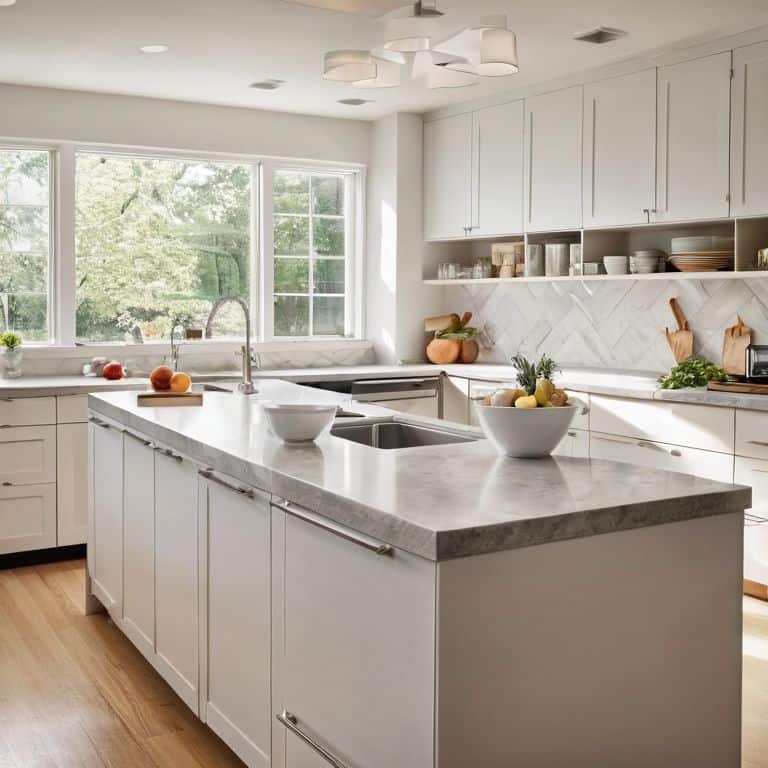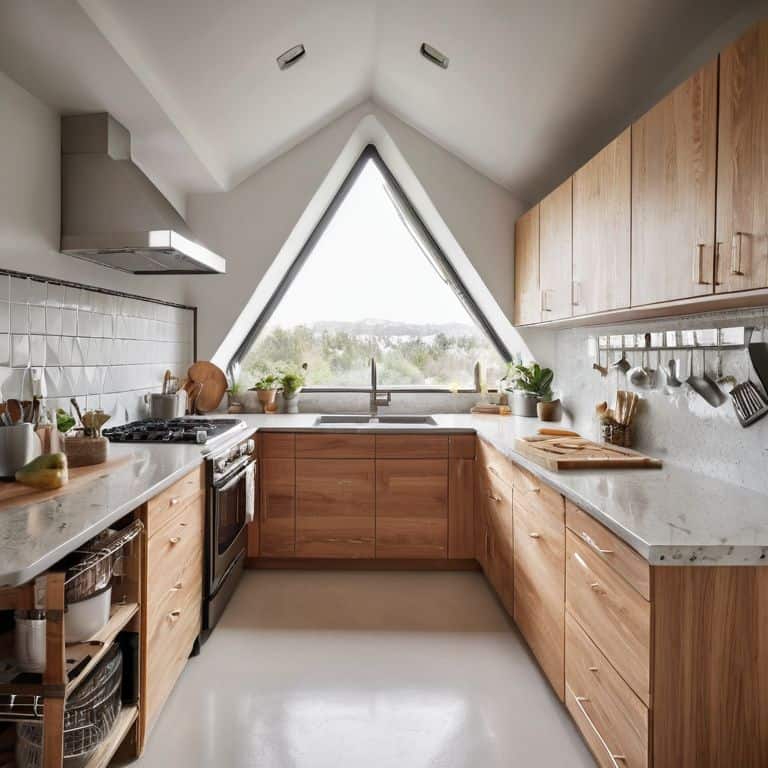I still remember the first time I stumbled upon the kitchen work triangle explained in design school – it was like a lightbulb moment for me. As someone who’s passionate about cooking and good design, I was fascinated by the idea that a simple geometric concept could revolutionize the way we interact with our kitchens. But as I delved deeper, I realized that many designers and homeowners were overcomplicating this concept, making it seem like a luxurious indulgence only accessible to those with unlimited budgets.
As someone who’s worked with numerous clients to create functional and beautiful kitchens, I’m here to tell you that optimizing your kitchen workflow doesn’t have to break the bank. In this article, I’ll share my no-nonsense, experience-based advice on how to apply the kitchen work triangle principle to create a space that’s both efficient and inspiring. Whether you’re a seasoned cook or a culinary newbie, I’ll provide you with practical tips and real-world examples to help you transform your kitchen into a haven that sparks joy and creativity. So, let’s get started on this journey to create a kitchen that truly works for you, not against you.
Table of Contents
- Kitchen Harmony Unlocked
- Efficient Kitchen Layouts Through Workflow Optimization
- Small Kitchen Triangle Solutions for Better Cooking
- The Kitchen Work Triangle Explained
- 5 Essential Tips to Master the Kitchen Work Triangle
- Key Takeaways for a Harmonious Kitchen
- Unlocking Kitchen Harmony
- Embracing the Kitchen Work Triangle: A Path to Culinary Bliss
- Frequently Asked Questions
Kitchen Harmony Unlocked

To achieve kitchen workflow optimization, it’s essential to understand how the work triangle dimensions impact your cooking experience. By strategically placing your sink, stove, and refrigerator, you can create a seamless flow that makes cooking a breeze. I like to think of it as a _dance around the kitchen_, where every step is intentional and efficient.
When designing an efficient kitchen layout, I consider the work triangle dimensions to be the foundation. This principle helps me create a space that is both functional and beautiful. For instance, in a small kitchen, _small kitchen triangle solutions_ can make all the difference. By applying the work triangle concept, even the most compact spaces can feel expansive and easy to navigate.
In my experience, a well-designed kitchen zone can elevate the entire cooking experience. Whether you prefer a _traditional_ or _modern work triangle_ approach, the key is to create a space that feels intuitive and harmonious. By balancing form and function, you can unlock a kitchen that inspires creativity and joy. With a little planning and attention to detail, you can achieve a kitchen that is both efficient and elegant, making cooking a true delight.
Efficient Kitchen Layouts Through Workflow Optimization
When designing an efficient kitchen layout, I always consider the workflow of the space. This involves thinking about how you move through the kitchen, from food preparation to cooking and cleaning. By optimizing the workflow, you can reduce unnecessary steps and make the cooking process more enjoyable.
To achieve this, I recommend applying the kitchen work triangle principle. This involves positioning the sink, stove, and refrigerator in a triangular formation to minimize walking distances and improve the overall flow of the kitchen. By doing so, you can create a more harmonious and functional space that makes cooking a breeze.
Small Kitchen Triangle Solutions for Better Cooking
In smaller kitchens, it’s all about maximizing every inch to create a functional workflow. This means carefully considering the placement of your sink, stove, and refrigerator to minimize walking distances and make cooking a breeze. By doing so, you’ll be amazed at how much more efficiently you can cook, even in the coziest of spaces.
To achieve this, I always recommend assessing your kitchen’s unique layout and identifying areas where you can improve traffic flow. For instance, consider using a cart or island to create a central workspace, keeping essential utensils and ingredients within easy reach. This simple tweak can make a huge difference in your overall cooking experience.
The Kitchen Work Triangle Explained

To truly understand the concept, let’s dive into the history of the kitchen work triangle. This idea was first introduced in the 1950s as a way to optimize kitchen workflow optimization by creating a triangle between the three main workstations: the sink, stove, and refrigerator. The goal was to reduce walking distances and improve efficiency.
When it comes to applying this concept to real-life kitchens, it’s essential to consider work triangle dimensions. A traditional work triangle has each side measuring between 4 and 9 feet, with the total distance of all sides not exceeding 26 feet. However, with the rise of efficient kitchen layouts, these dimensions can be adjusted to fit smaller or larger spaces.
In modern kitchens, the work triangle concept has evolved to incorporate kitchen zone design, where different areas are designated for specific tasks, such as food preparation or cooking. This approach allows for more flexibility and can be particularly useful in smaller kitchens, where small kitchen triangle solutions are necessary to maintain efficiency. By understanding and applying these principles, homeowners can create a kitchen that is both beautiful and functional.
Kitchen Zone Design for a Calm Culinary Experience
To create a calm culinary experience, I always consider zone design when planning a kitchen. This involves dividing the space into distinct areas for cooking, cleaning, and preparation. By doing so, homeowners can avoid clutter and chaos, making the cooking process more enjoyable.
A well-designed kitchen should have a functional workflow, allowing users to move seamlessly between tasks. This can be achieved by placing frequently used items in easy-to-reach locations and designating specific areas for food preparation, cooking, and cleaning.
Traditional vs Modern Work Triangle Dimensions
When it comes to the kitchen work triangle, there’s often a debate about traditional dimensions versus more modern interpretations. I’ve found that a classic triangle with points at the sink, stove, and refrigerator can be incredibly effective, but it’s not the only way to create a harmonious kitchen.
In modern kitchens, the work triangle might be more fluid, with variable dimensions that adapt to the specific needs and layout of the space. This can be especially useful in smaller kitchens or those with unique architectural features, where a more flexible approach to the work triangle can help create a sense of flow and efficiency.
5 Essential Tips to Master the Kitchen Work Triangle
- Prioritize your cooking habits: understand how you move in your kitchen and position your sink, stove, and refrigerator accordingly for maximum efficiency
- Consider the ‘work zones’ concept: divide your kitchen into zones for cooking, cleaning, and preparation to reduce traffic and improve workflow
- Optimize your triangle’s dimensions: aim for a total distance of around 26 feet or less between the three points of the triangle to minimize walking distances
- Choose a layout that suits your style: whether it’s a traditional closed triangle or a more modern, open-plan design, ensure it fits your cooking needs and personal preference
- Lighting is key: don’t forget to consider the lighting in your kitchen work triangle – good lighting can enhance the functionality and ambiance of your culinary space
Key Takeaways for a Harmonious Kitchen
By applying the kitchen work triangle principle, you can significantly reduce cooking time and effort by optimizing the distance between your sink, stove, and refrigerator
Effective kitchen zone design can help create a calm and organized cooking environment, even in small spaces, by grouping similar activities together
Whether you’re working with a traditional or modern kitchen layout, understanding the kitchen work triangle and its dimensions can help you make informed design decisions to enhance your overall cooking experience
Unlocking Kitchen Harmony
The kitchen work triangle is not just a design concept, it’s a recipe for culinary joy – by embracing its simple yet powerful geometry, you’ll be cooking up a storm in no time, with every step, every stir, and every savory delight feeling like a graceful dance through your kitchen!
Clara Wu
Embracing the Kitchen Work Triangle: A Path to Culinary Bliss

As we’ve explored the kitchen work triangle and its applications in various kitchen layouts, it’s clear that this fundamental design principle can significantly enhance our cooking experiences. From efficient workflow optimization in small kitchens to zone design in larger ones, understanding and implementing the work triangle can lead to a more harmonious and productive culinary environment. Whether you’re a seasoned chef or a beginner cook, recognizing the importance of the kitchen work triangle can inspire a new wave of creativity and enthusiasm in your cooking adventures.
As you embark on your own kitchen design journey, remember that the art of cooking is deeply intertwined with the science of space. By embracing the kitchen work triangle and making it your own, you’re not just designing a kitchen – you’re crafting a haven for creativity and connection. So, go ahead, get inspired, and let the kitchen work triangle be your guide to a culinary haven that nourishes both body and soul.
Frequently Asked Questions
How do I determine the ideal dimensions for my kitchen work triangle based on my personal cooking style and kitchen layout?
To determine your ideal kitchen work triangle dimensions, consider your cooking style and layout. Measure the distance between your sink, stove, and fridge – aim for a total of 26 feet or less. For me, it’s all about balance: I like to keep my triangle compact, around 12-15 feet, to encourage efficient workflow and minimize footsteps.
Can the kitchen work triangle be applied to non-traditional kitchen shapes, such as L-shaped or U-shaped kitchens?
Absolutely, the kitchen work triangle can be adapted to non-traditional kitchen shapes. For L-shaped kitchens, focus on the primary workstations, while U-shaped kitchens can benefit from a centralized triangle configuration, ensuring efficient workflow and minimizing traffic.
What role does kitchen lighting play in enhancing the functionality and ambiance of the kitchen work triangle?
For me, kitchen lighting is the unsung hero of the work triangle. It’s all about striking a balance between task lighting, like under-cabinet LEDs, and ambient lighting, like a stylish pendant, to create a warm and inviting space that inspires culinary creativity. Proper lighting can make or break the functionality and ambiance of your kitchen, trust me!
